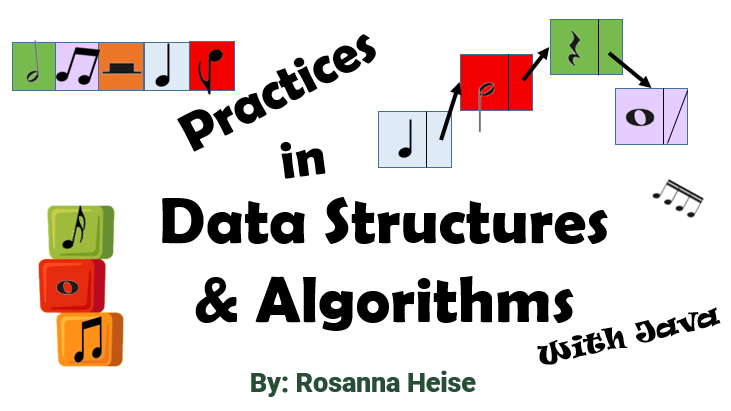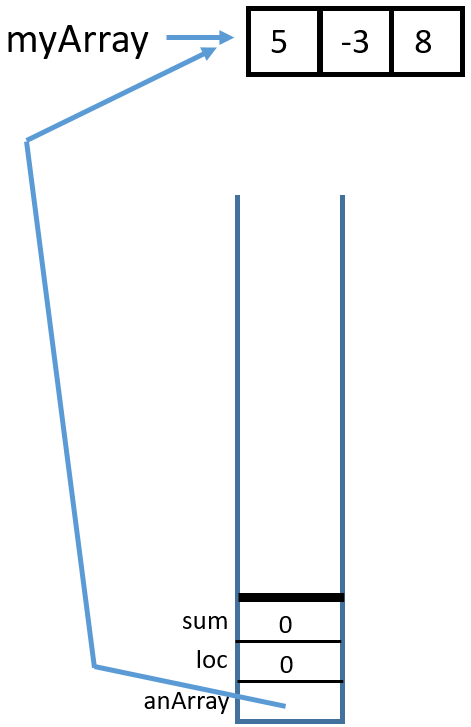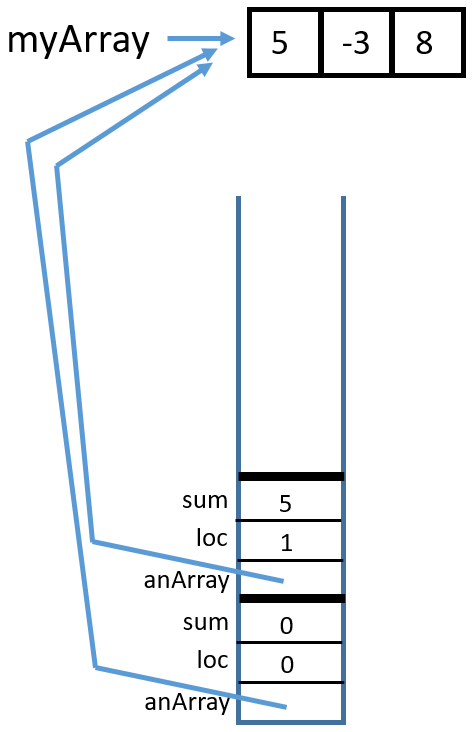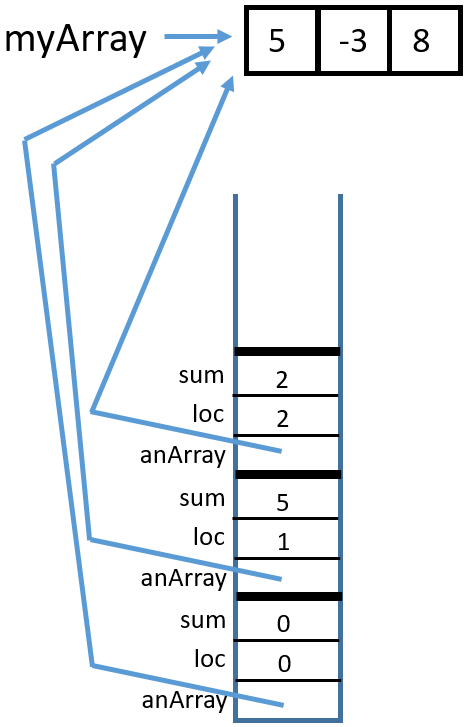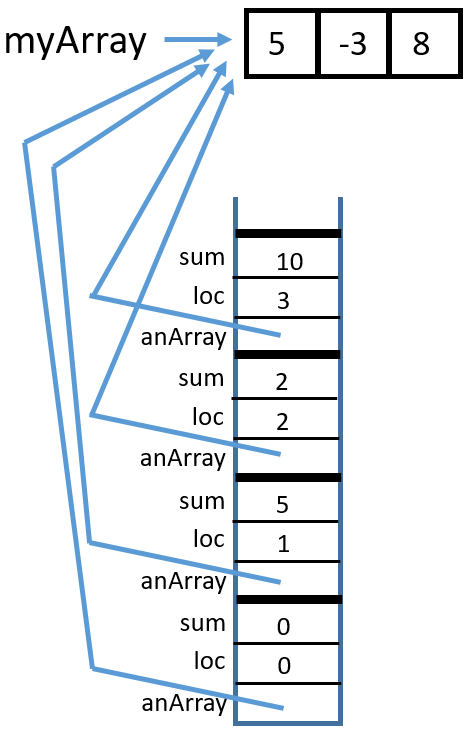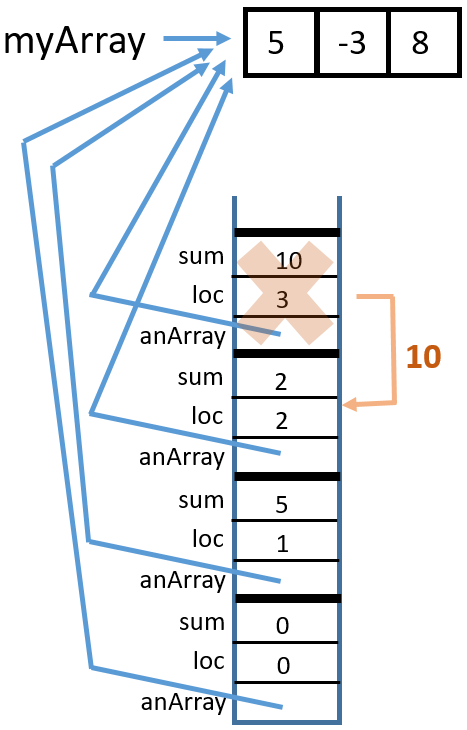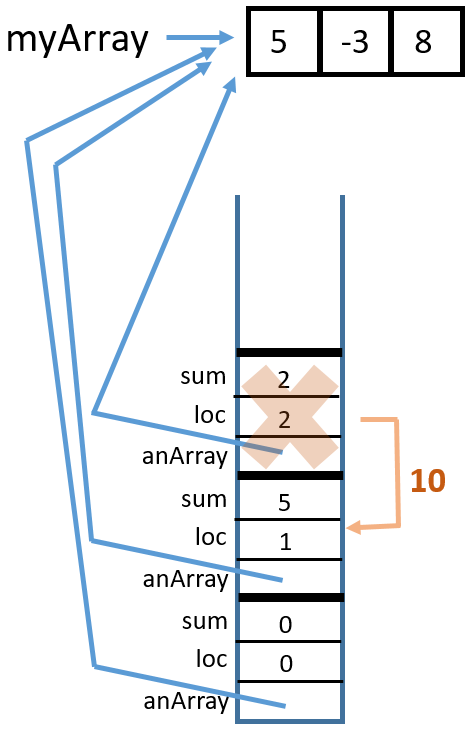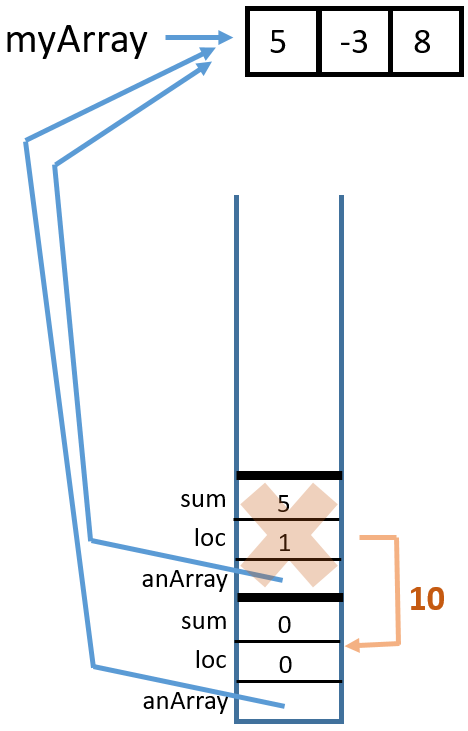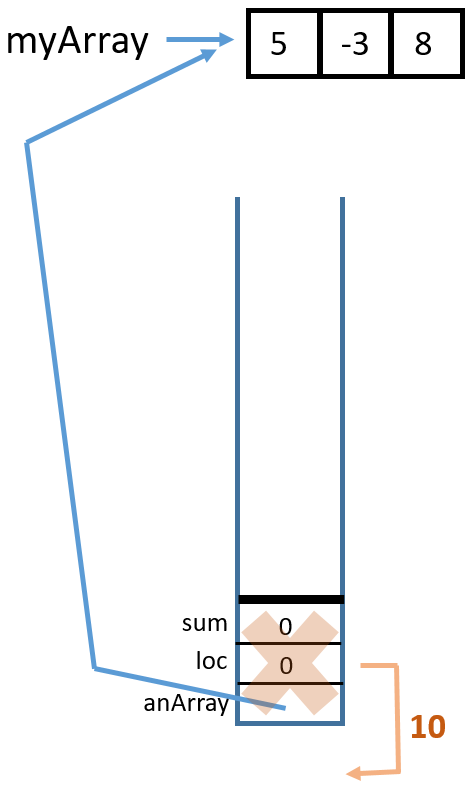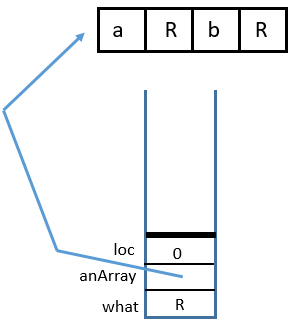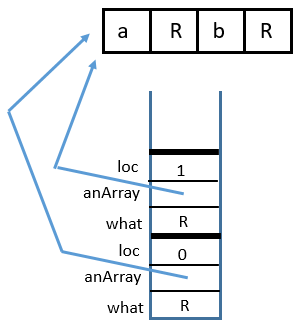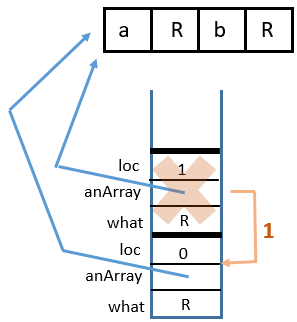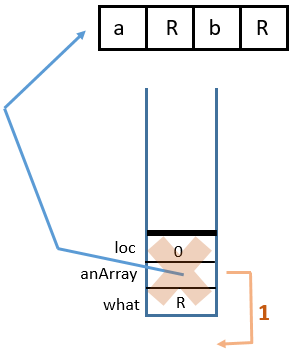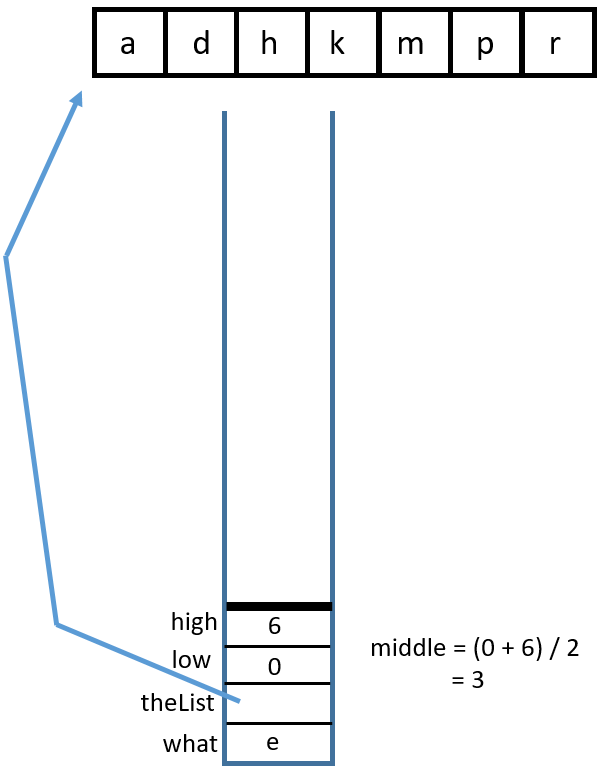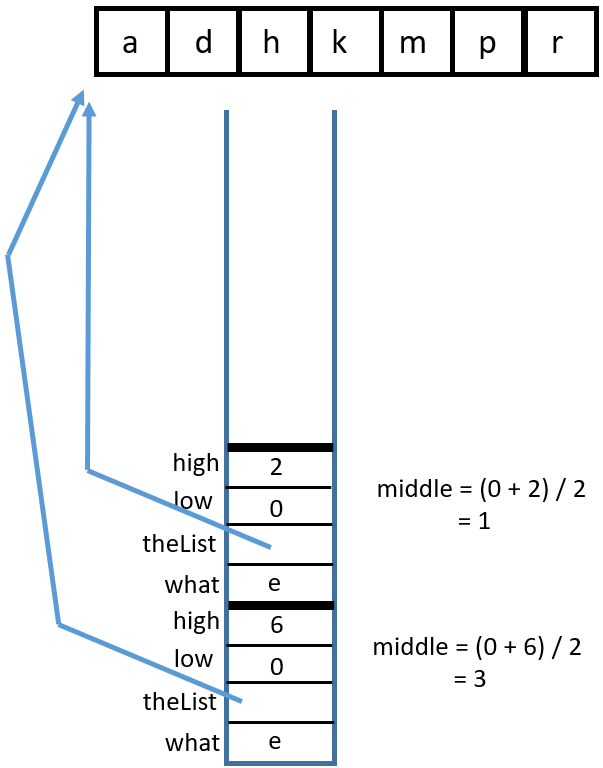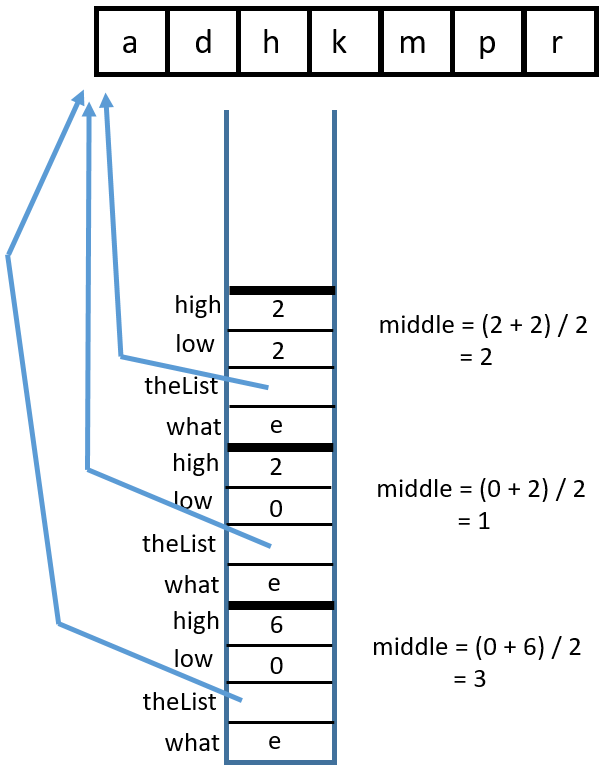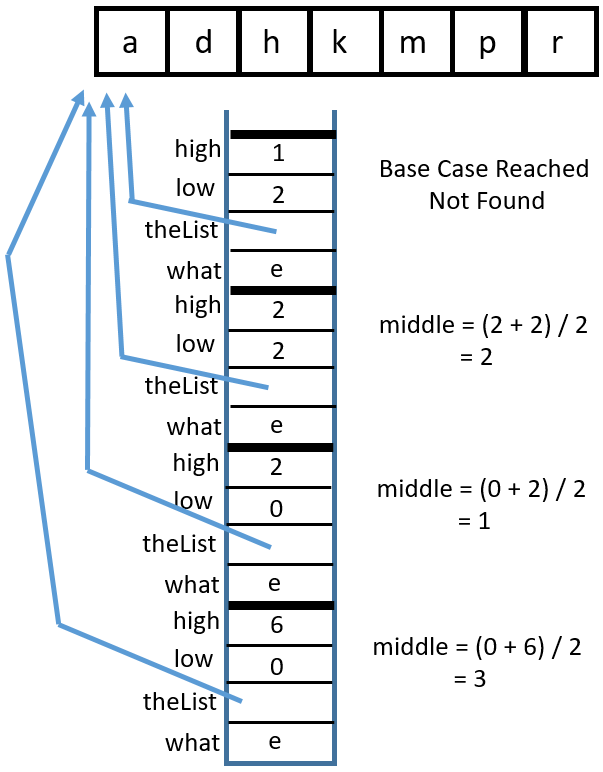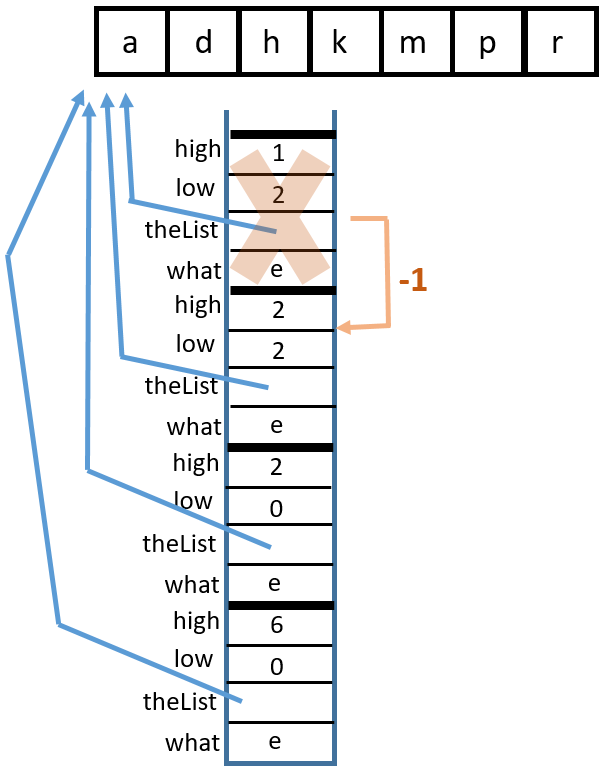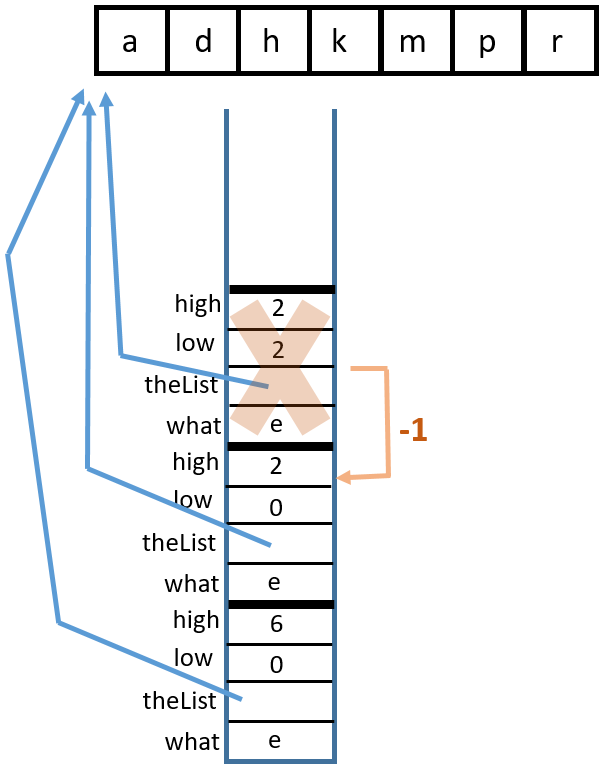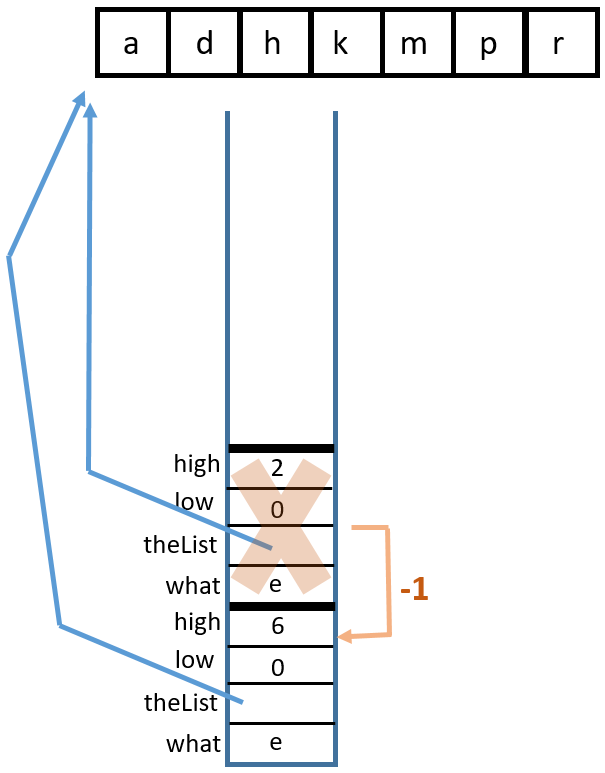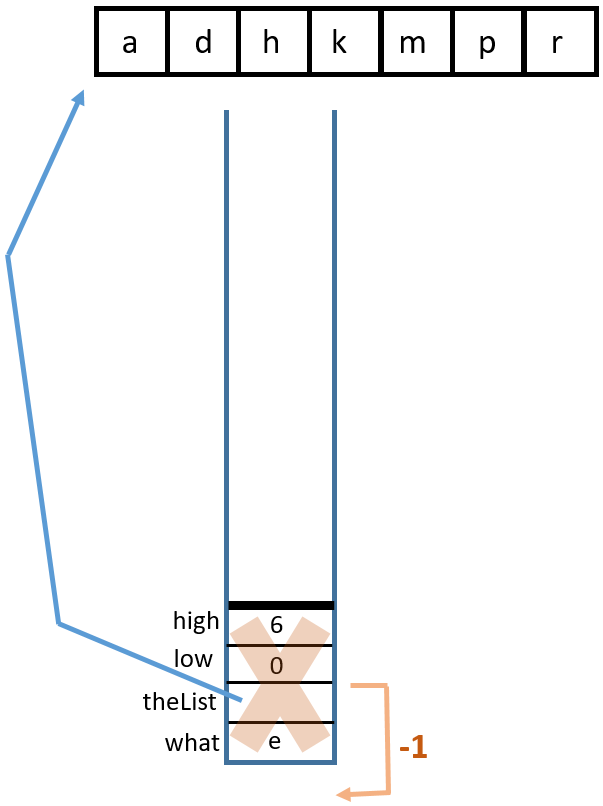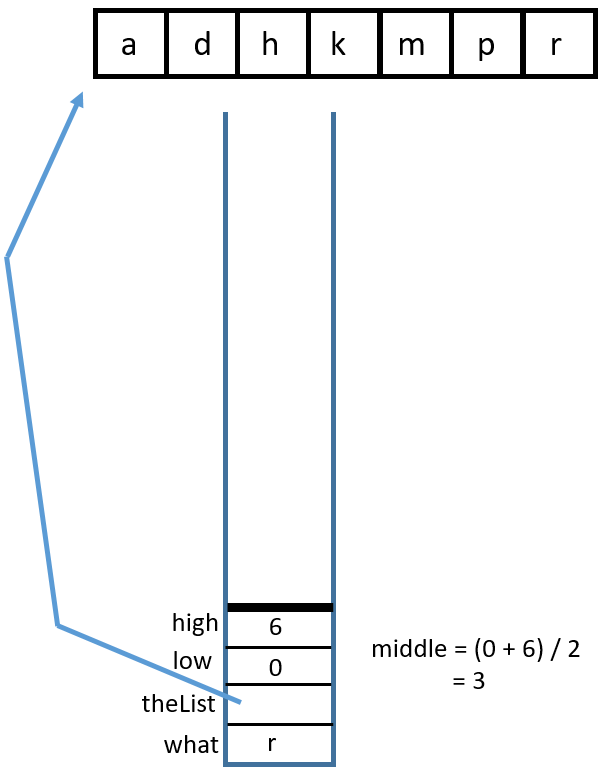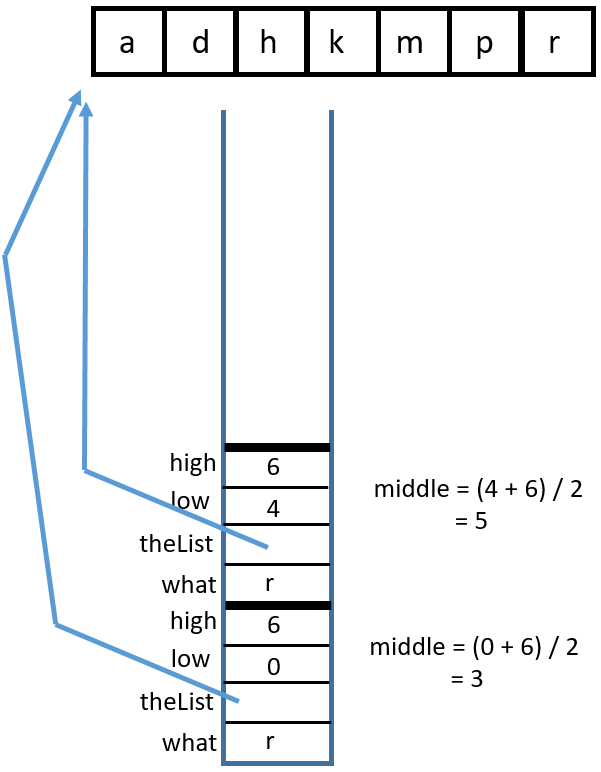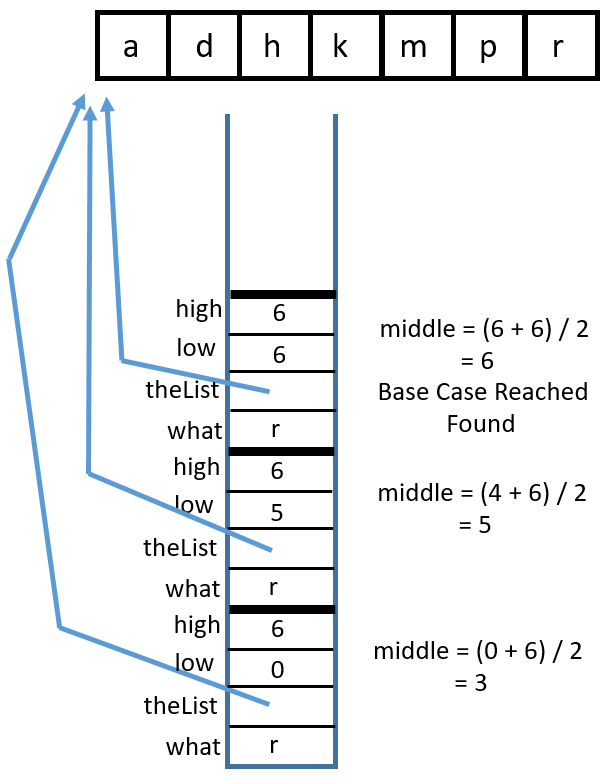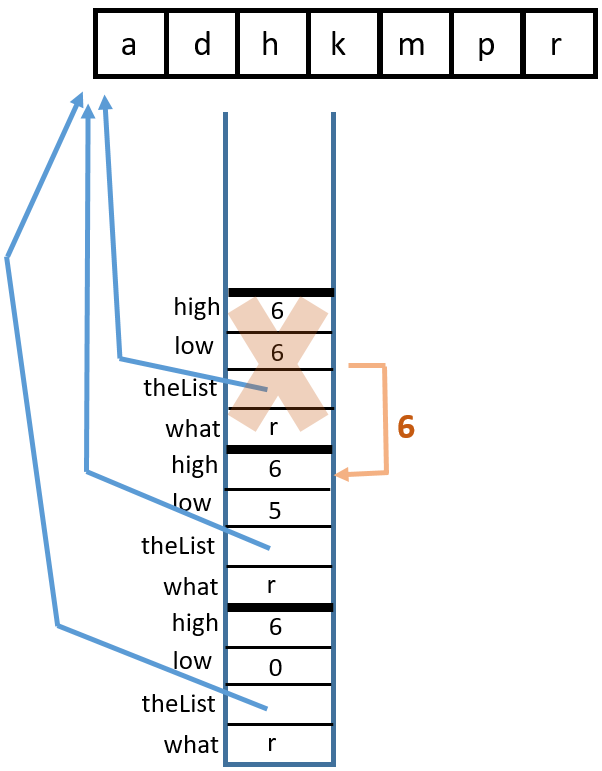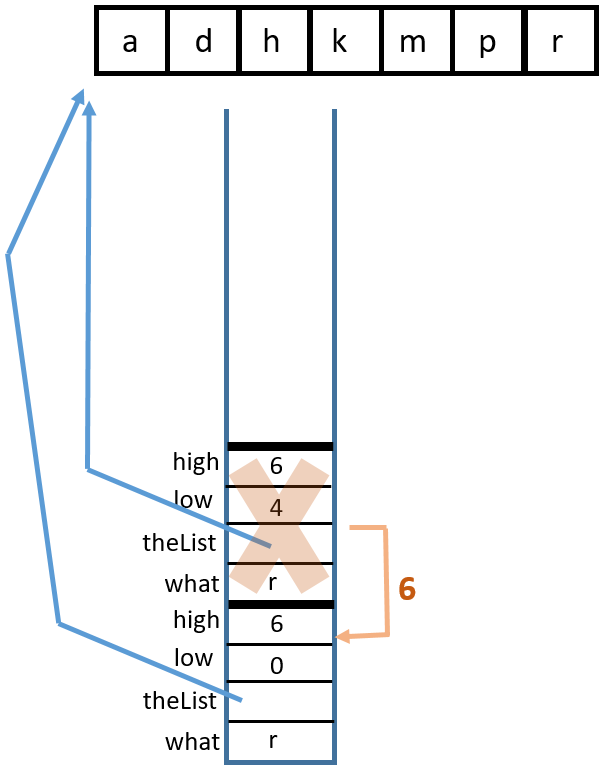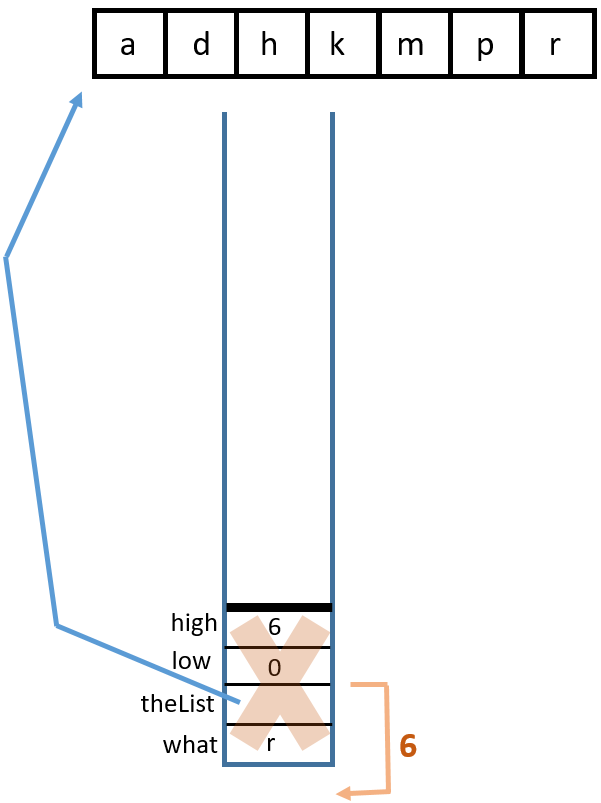Solutions to the Practice Questions#
Example - Printing Characters Using Both Loop and Recursion#
The base case is
aNum <= 0. In the base case, the method ends and returns without doing anything.The recursive call is
printNumChars(aNum - 1, aChar). Since it is subtracting 1 fromaNum, this ensures that eventuallyaNumwill be 0, putting the execution into base case.
Example - Sum an Array with Both Loop and Recursion#
The base case is
loc >= anArray.length.The recursive call is
sumArrayTRSub(anArray, loc + 1, sum + anArray[loc])solochas 1 added to it each time. This guarantees that eventuallylocwill exceed the array’s length, putting the execution into the base case.Here is the trace:
Here is the trace:
1 Call
Call sumArrayTRSub(myArray, 2, 0)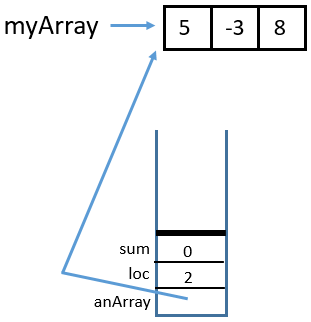
2 Call
sumArrayTRSub(myArray, 3, 8)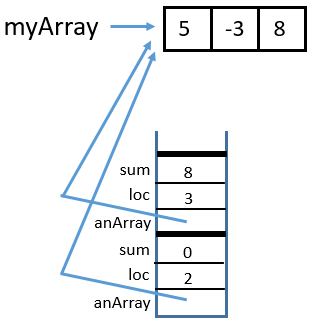
3 Return from
sumArrayTRSub(myArray, 3, 8)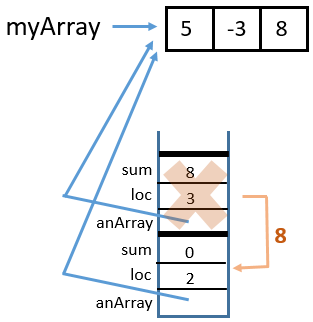
4 Return from
sumArrayTRSub(myArray, 2, 0)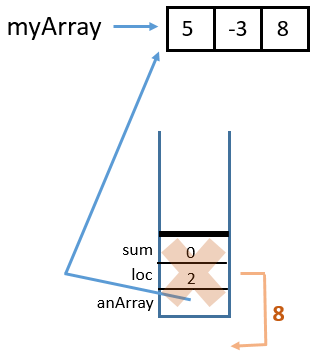
Example - Power Function With Recursion#
There is one base case, when
yis 0.There are two recursive calls, one in the
else if, namelypower(x, -y), and one in theelse, namelypower(x, y - 1).yneeds to become 0, so if it was negative then making it positive ensures that subtracting one will eventually makeyequal to 0. Ifywas positive to start with, then subtracting one will eventually makeyzero.Here is the trace:
1 Call
power(25, 3)
2 Call
power(25, 2)
3 Call
power(25, 1)
4 Call
power(25, 0)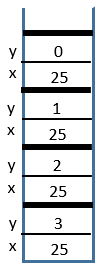
5 Return from
power(25, 0)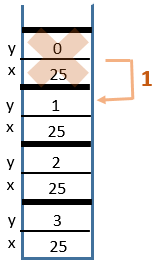
6 Return from
power(25, 1)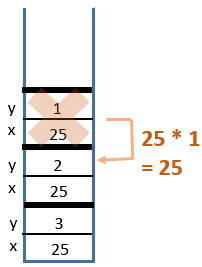
7 Return from
power(25, 2)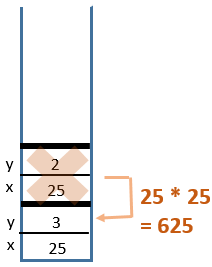
8 Return from
power(25, 3)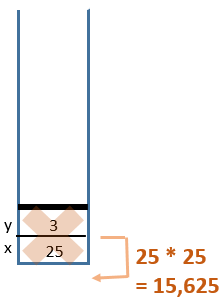
Here is the trace:
1 Call
power(3, -1)
2 Call
power(3, 1)
3 Call
power(3, 0)
4 Return from
power(3, 0)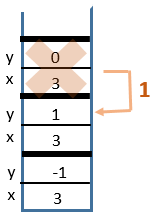
5 Return from
power(3, 1)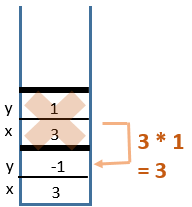
6 Return from
power(3, -1)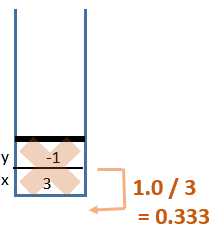
No. The result is built after the recursive call. As the stack is being popped, the return value then multiplies with
x. The recursive call is not the last thing before base case.public static double power(int x, int y){ if (y == 0){ //Added this to make recursion faster, can end at 1 now return 1; } if (y < 0){ return 1.0 / powerSub(x, -y); } return powerSub(x, y); } private static double powerSub(int x, int y){ if (y == 1){ //Saving a stack frame over y == 0 return x; } else { return x * powerSub(x, y - 1); } }
Sequential Search Recursively#
There are two base cases:
loc >= anArray.lengthorwhat == anArray[loc]. This is when the array has been exhausted or the item has been found.There is one recursive call, in the last line of code in the method:
seqSearch(what, anArray, loc + 1)locchanges so that it moves through the indices of the array. Since one is being added tolocwe guarantee to reach the length of the array.seqSearch(char, char[])Here is a stack trace:
Yes. The recursive call is the last thing done before base case is reached, so the value returned is simply passed down the stack.
Binary Search Recursively#
There are two base cases:
high < lowortheList[middle] == what. These are for identifying if enough places have been checked or if the item has been found.There are two recursive calls:
binarySearch(what, theList, middle + 1, high)andbinarySearch(what, theList, low, middle - 1)Either
lowis incremented orhighis decremented, eventually leading tohighbecoming less thanlow.binarySearch(char, char[])You can visualize this with a binary search tree or with a stack diagram. Binary search tree:

Stack diagram:
1 Call
binarySearch('k', {'a', 'd', 'h', 'k', 'm', 'p', 'r'}, 0, 6)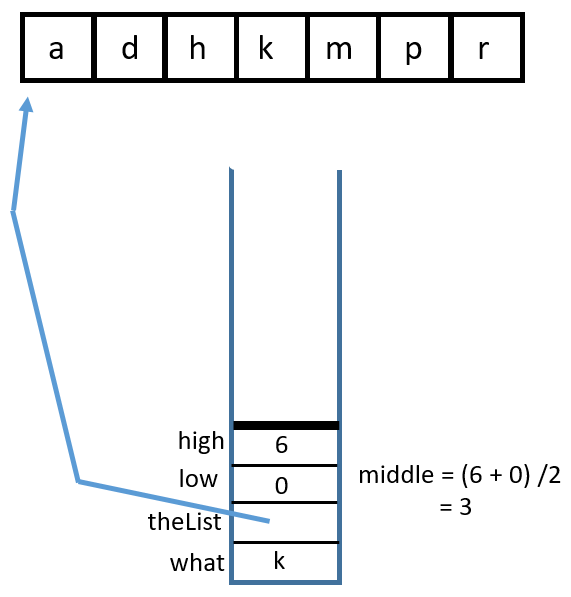
2 Return from
binarySearch('k', {'a', 'd', 'h', 'k', 'm', 'p', 'r'}, 0, 6)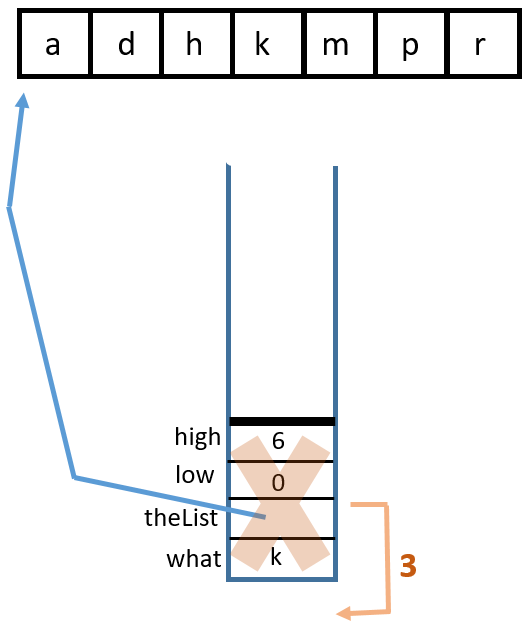
You can visualize this with a binary search tree or with a stack diagram. Binary search tree:
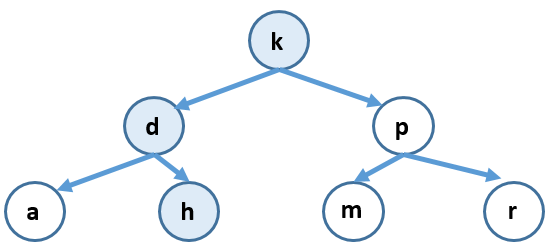
Stack diagram:
You can visualize this with a binary search tree or with a stack diagram. Binary search tree:
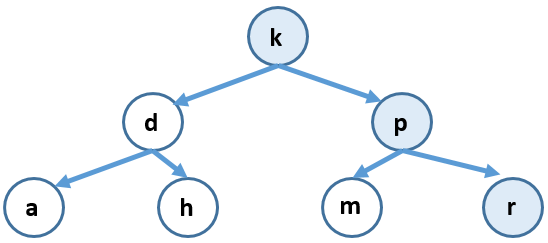
Stack diagram:
Size 7: 3
Size 15: 4
Size \(n\): \(\log_2 (n + 1)\)Yes. The recursive call is the last thing done before base case is reached, so the value returned is simply passed down the stack.
Quicksort#
Original: { 24, 67, 102, 14, 90, 55, 10, 76, 92, 59} pivot: 59 First Pass: { 24, 10, 55, 14, 59, 102, 67, 76, 92, 90} pivot: 14 and 90 Second Pass: { 10, 14, 55, 24, 59, 76, 67, 90, 92, 102} pivot: 24, 67, 102 Third Pass: { 10, 14, 24, 55, 59, 67, 76, 90, 92, 102} now all base cases
Original: {7, 6, 5, 4, 3, 2, 1} pivot: 1 First Pass: {1, 6, 5, 4, 3, 2, 7} pivot: 7 Second Pass: {1, 6, 5, 4, 3, 2, 7} pivot: 2 Third Pass: {1, 2, 5, 4, 3, 6, 7} pivot: 6 Fourth Pass: {1, 2, 5, 4, 3, 6, 7} pivot: 3 Fifth Pass: {1, 2, 3, 4, 5, 6, 7} pivot: 5 Sixth Pass: {1, 2, 3, 4, 5, 6, 7} now base case
Original: {97, 68, 75, 34, 45, 60} pivot: 60 First Pass: {45, 34, 60, 68, 97, 75} pivot: 34, 75 Second Pass: {34, 45, 60, 68, 75, 97} now all base cases
/** * Returns the location of the median of the first, middle, and last * items in the list. * * @param aList - list of size 3 or more, all unique * @return - index (0-based) of the median of first, middle and last */ public static int getMedianLoc(int[] aList){ int middleLoc = aList.length / 2; int lastLoc = aList.length - 1; int first = aList[0]; int middle = aList[middleLoc]; int last = aList[lastLoc]; if (first < middle){ if (middle < last){ //first < middle < last return middleLoc; } else if (first < last){ //first < last < middle return lastLoc; } else{ //last < first < middle return 0; } } else{ //middle < first if (first < last){ //middle < first < last return 0; //first location } else if (middle < last){ //middle < last < first return lastLoc; } else{ //last < middle < first return middleLoc; } } }
/** * Finds a pivot in aList as the median of three and moves the pivot * to the end of the list, putting the original ending element in * where the median was. * * @param aList - list of size 3 or more, all unique */ public static void pivotToEnd(int[] aList){ swap(aList, getMedianLoc(aList), aList.length - 1); }
Change the inequality sign in two places in the partition algorithm.
while ((left <= right && aList[left] < pivot))becomes
\(\;\;\;\;\;\)while ((left <= right && aList[left] > pivot))
and
while ((right >= left && aList[right] > pivot))becomes
\(\;\;\;\;\;\)while ((right >= left && aList[right] < pivot))
